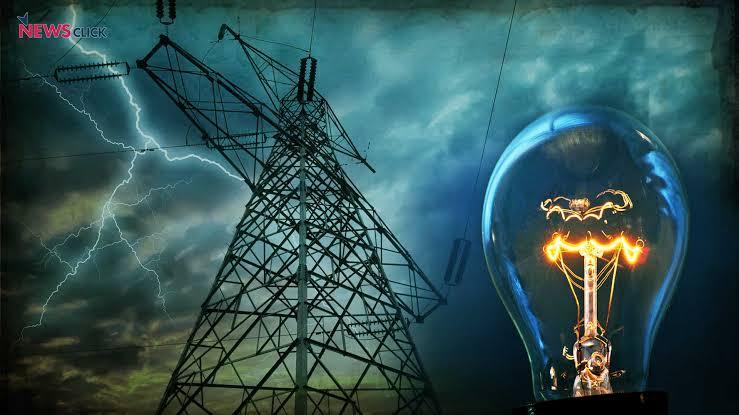Continuing Crisis and Crony Capitalism in Electricity Sector

The problems of the electricity sector have only grown with the neoliberal reforms of the sector that started from the 1990s. The Enron style reforms introduced high-cost private power into the grid in the 90s, followed by the Electricity Act 2003, which virtually de-licensed generation and abolished planning of the power sector. We now have the new proposal of separating what is called “carriage from the content”, which—shorn of this new English—means that electricity flowing through wires will be owned by separate entities rather than the one owning the wires. In other words, electricity traders who do not produce will buy electricity and “supply” it to the consumers through wires owned by others. They will make profits, while the generator or the owner of the wires make losses, truly a trader-friendly policy.
If we look beyond the English, all these measures are to convert electricity as energy to a commodity that can be bought and sold through markets. The problem with markets is that it does not work for infrastructure sectors, least of all electricity sector. Markets fail in sectors that have large investments and long gestation. In the electricity sector, we have a further problem of always needing to balance demand and generation at all times, as electricity, unlike other commodities, cannot be stored. All these demand that the electricity sector requires planning and long-term investments, and therefore, the role of the state.
The failure of the reforms can be seen if we look at the debt burden of the State Electricity Boards (SEBs) and now, the state government owned distribution companies, they have grown continuously from the time that reforms were introduced. They grew from very low levels of debt of the SEBs when the reforms started in the 90s to 0.4 lakh crore in 2002. This required a One Time Settlement Scheme, transferring central funds as loans to the state governments to take over the SEB’s debt. After the 2003 Electricity Act, which virtually de-licensed generation and abolished planning of the power sector, the debt of the state-owned distribution companies grew to 1.9 lakh crore in 2012, needing another debt restructuring scheme, with the state governments again taking over the debt of the state-owned distribution utilities. We now have the UDAY scheme of again restructuring the debt of the distribution companies to the tune of 3.8 lakh crore, as loans to states from the Centre, for states to take over the losses of the distribution companies. The more reforms we have, the deeper the state governments sink into debt, the balance sheet of state-owned distribution companies become even worse, and the fundamental problems of the sector remain unaddressed.
Also read: ‘Privatise or Lose Funding’: Power Engineers Oppose Ministry’s Arm-Twisting Ultimatum
One of the failures of the Electricity Act, 2003, is, by delinking planning from licensing of generation companies, a large number of private generators entered the sector without any need to show where and how they would sell electricity; or examining the larger question of how much additional generation do we actually require. One consequence of this unplanned growth is that the generation was far in excess of actual demand. As a consequence, the plant load factor, the amount of time a large generating plant runs, has fallen from 70-75% in the end 90s to a low 50-55% today, a huge loss as idling or wasted resource.
The central government also made easy money available to the generators during this period, forcing public sector banks to provide easy loans to Ambanis, Adanis, Tatas, Birlas, etc., all of which are facing financial crisis, creating a huge overhang of non-performing assets (NPAs) for the banks. It is the banks that are taking a huge hit to their balance sheets, now needing bail-outs from the public exchequer. In other words, we, the people of India, first provide capital to private big capital through our savings in the banks. When they sink or siphon off the money through clever book keeping, we take the losses and bail them out by writing off their debts from the public exchequer, i.e., from our taxes – classic case of privatising profits and socialising the losses, the hall mark of “good” crony capitalism.
This has been further compounded in the way renewables have been inducted into the grid. Again, private generators have been given incentives through easy and cheap loans subsidised by the public exchequer. Or with Enron like contracts, which forces the state distribution companies to take costly renewable for the next 20-25 years. One classic example of such long-term Enron-like contracts of the Gujarat government, when Modi was the chief minister, is as follows. Indian Express reported that Gujarat Energy Minister Saurabh Patel in a written answer to the Gujarat Assembly said that the Gujarat government bought solar power at a rate of Rs. 15 per unit from 42 different entities as per Power Purchase Agreement (PPAs) signed with them. The largest supplier of this private solar power was Adani Power Limited. In this same period, it bought solar power at the rate of Rs. 4.50 per unit from Solar Energy Corporation of India Ltd, a company under the Ministry of New and Renewable Energy.
The distribution companies, under the guise of encouraging renewables, have been forced to take costly wind and solar power, and run down or idle their own coal-fired plants. Further, if they have fixed off-take guarantees through contracts with central or private generators, they have to pay the fixed costs for power they could not take—almost half the cost of power—for inducting such renewable power into the grid.
The issue here is not encouraging renewables. Of course, any new source of energy will have high costs initially, and needs to be subsidised. The issue here is, it is the state governments and the consumers who are bearing this cost, with the central government only creating the policies that favour crony capitalists with no responsibility for its consequences on the states or the consumers.
One additional element in the Indian scenario of failure of market reforms in the electricity sector, is that in India, distribution is entirely the responsibility of the states. The central government uses electricity reforms as a method of transferring the entire losses of the sector to the distributors, who are ultimately responsible for supplying electricity to the people. It is the state governments that own the distribution companies and have to face the people’s anger if the electricity is either not supplied, or supplied at high cost.
The electricity sector policies are used by the Centre in two ways: a) to help private capital enter generation by subsidising them through core sector lending from public sector banks; b) force state governments to subsidise the consumers through loans from the central kitty. These loans from the central government increases their dependence on the Centre, and forces them to accept further capital friendly policies at the expense of the people.
The failure of the last 30 years of these market reforms in the electricity sector have only led to the a bigger crisis. The debts of the electricity companies—both privately owned generation companies and state-owned distribution companies—now threaten banks and the fiscal stability of the state governments. The biggest NPAs of the banks stem from the power generating companies. The biggest cause of the deficit in the balance sheets of the state governments is the continuous bleeding from the losses of the distribution companies. But all of this has not produced any re-thinking of the electricity sector as a whole—from generation to the supply of electricity to the consumer—while continuing to try one failed reform after another. Crude ideology of markets is introduced in spite of repeated failures to the contrary.
We cannot understand the electricity sector and its policies unless we understand the purpose of the policies. The original Electricity Act, 1948, drafted by Ambedkar, spelt this out clearly: it was the duty of the state to provide electricity to all its citizens at an affordable cost. Electricity generation and distribution was not for making profits but to fulfil this primary objective. From the 90s, the only objective has been to promote the interest of private capital and help them make profits. It is the original vision that development must be equitable which we have to bring back to the people, as opposed to the current vision of crony capitalism espoused by successive governments.
Get the latest reports & analysis with people's perspective on Protests, movements & deep analytical videos, discussions of the current affairs in your Telegram app. Subscribe to NewsClick's Telegram channel & get Real-Time updates on stories, as they get published on our website.























